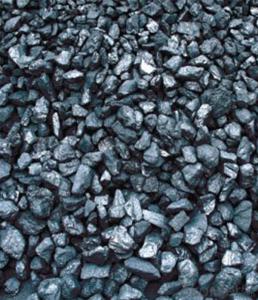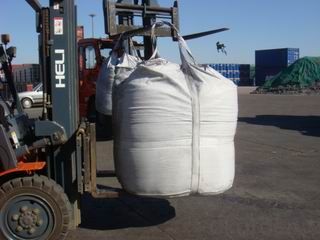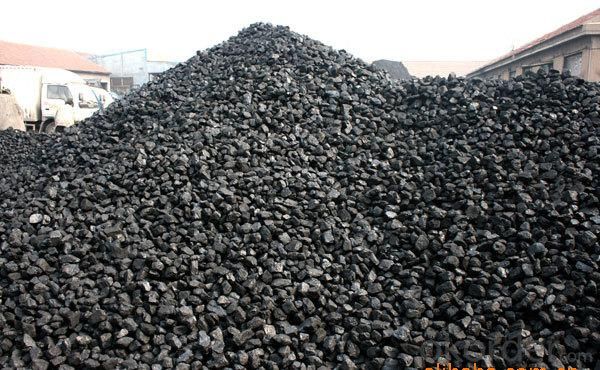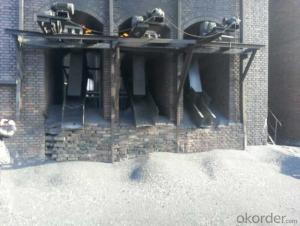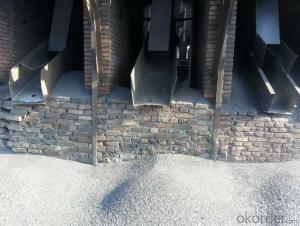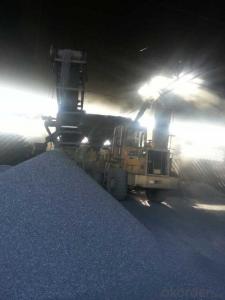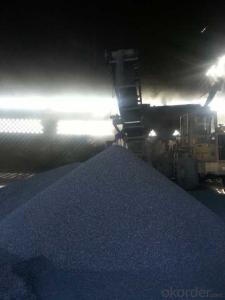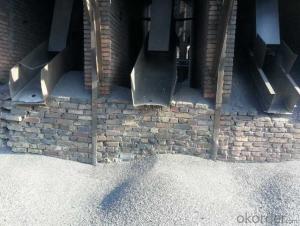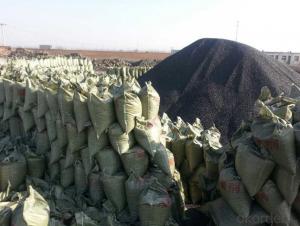Injection Carbon FC88 with Good Price and Stable Quality
- Loading Port:
- Tianjin
- Payment Terms:
- TT or LC
- Min Order Qty:
- 20 m.t.
- Supply Capability:
- 5000 m.t./month
OKorder Service Pledge
OKorder Financial Service
You Might Also Like
Packaging & Delivery
Injection Carbon FC88 with Good Price and Stable Quality
25kgs/50kgs/1ton per bag or as buyer's request
Specifications
Injection Carbon FC88 with Good Price and Stable Quality
Calcined Anthracite
Fixed carbon: 90%-95%
S: 0.5% max
Size: 0-3. 3-5.3-15 or as request
Advantage:
Injection Carbon FC88 with Good Price and Stable Quality
1. strong supply capability
2. fast transportation
3. lower and reasonable price for your reference
4.low sulphur, low ash
5.fixed carbon:95% -90%
6..sulphur:lower than 0.3%
General Features:
Injection Carbon FC88 with Good Price and Stable Quality
| FC | 90 | 88 | 85 | 83 | 82 |
| ASH | 8.5 | 10 | 12 | 14 | 15 |
| V.M. | 1.5 | 2 | 3 | 3 | 3 |
| S | 0.35 | 0.5 | 0.5 | 0.5 | 0.5 |
| MOISTURE | 0.5 | 1 | 1 | 1 | 1 |
Pictures
Injection Carbon FC88 with Good Price and Stable Quality
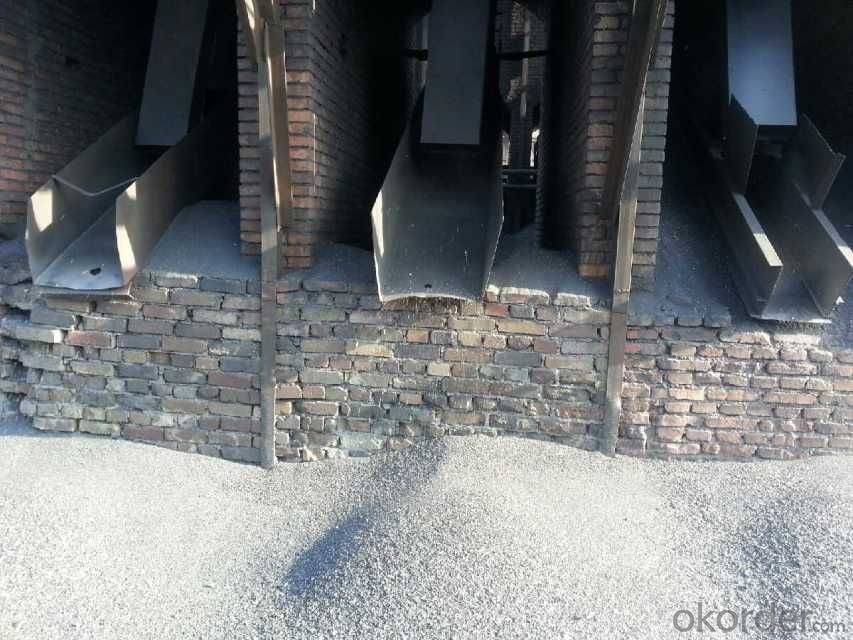
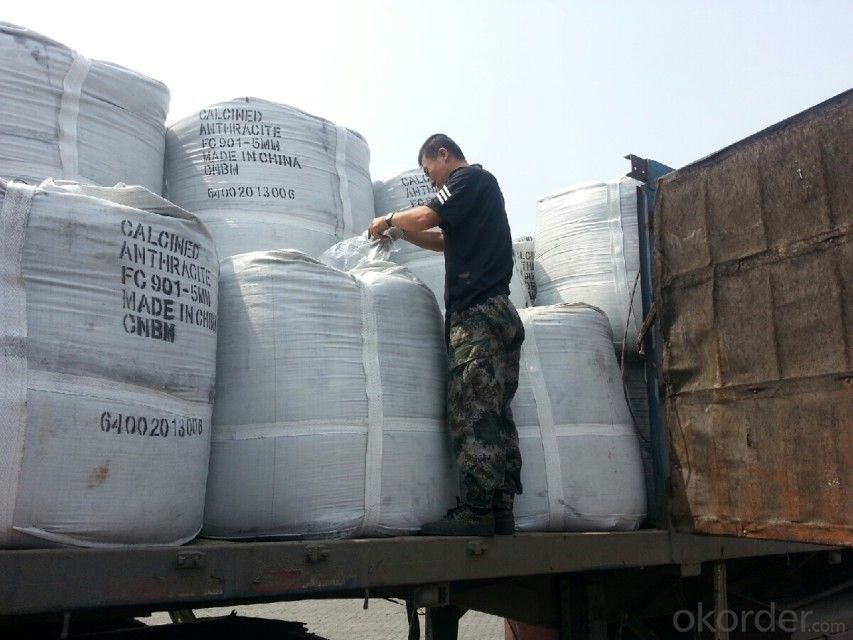
FAQ:
Injection Carbon FC88 with Good Price and Stable Quality
What can we do?
1.High quality and competitive price.
2.Timely delivery.
3.If any item you like. Please contact us.
Your sincere inquiries are typically answered within 24 hours.
so-font-kerning: 0'>2.Timely delivery.
3.If any item you like. Please contact us.
Your sincere inquiries are typically answered within 24 hours.
- Q: What are the challenges and opportunities of transitioning to a low-carbon economy?
- Transitioning to a low-carbon economy presents both challenges and opportunities. On the one hand, one of the major challenges is the need for significant changes in infrastructure, technology, and behavior. This transition requires substantial investments in renewable energy sources, energy-efficient buildings, and sustainable transportation systems. It also entails a shift away from fossil fuels, which have been deeply embedded in our economies for centuries. Another challenge is the potential economic impact on industries that heavily rely on carbon-intensive activities. Sectors such as coal mining, oil refining, and traditional manufacturing may face job losses and economic disruptions. The transition will require careful planning and support to ensure a just and inclusive transition for affected workers and communities. However, transitioning to a low-carbon economy also offers numerous opportunities. Firstly, it can spur innovation and create new industries and job opportunities. The development and deployment of renewable energy technologies, such as solar and wind power, can foster economic growth and provide employment in manufacturing, installation, and maintenance. It also promotes research and development in clean technologies, leading to breakthroughs and discoveries that can benefit various sectors. Secondly, transitioning to a low-carbon economy can improve public health and quality of life. By reducing reliance on fossil fuels, we can mitigate air pollution and its related health issues, such as respiratory problems and cardiovascular diseases. Additionally, investments in energy-efficient buildings can enhance comfort, reduce energy costs, and improve indoor air quality. Furthermore, transitioning to a low-carbon economy can enhance energy security and reduce geopolitical tensions. By diversifying energy sources and reducing dependence on fossil fuel imports, countries can increase their resilience to price fluctuations and geopolitical conflicts. This shift also promotes energy independence and reduces the need for costly military interventions in resource-rich regions. Lastly, transitioning to a low-carbon economy is essential for combating climate change and protecting the environment. By reducing greenhouse gas emissions, we can mitigate the impacts of global warming, such as extreme weather events, rising sea levels, and ecosystem disruptions. This transition allows us to preserve biodiversity, protect natural resources, and create a sustainable future for future generations. In conclusion, transitioning to a low-carbon economy brings challenges, including infrastructure changes, economic disruptions, and job losses. However, it also presents opportunities for innovation, job creation, improved public health, enhanced energy security, and environmental protection. With careful planning, collaboration, and support, the challenges can be overcome, and the opportunities can be maximized, leading to a more sustainable and prosperous future.
- Q: What are the sources of carbon emissions?
- The sources of carbon emissions include burning fossil fuels (such as coal, oil, and natural gas) for electricity, transportation, and industrial processes, as well as deforestation and land-use changes.
- Q: What are the impacts of carbon emissions on human health in developing countries?
- Developing countries are significantly affected by carbon emissions, which have considerable consequences for human health. The burning of fossil fuels and deforestation are the primary sources of these emissions, which contribute to the deterioration of air quality and give rise to a variety of health problems. Respiratory diseases are among the most immediate and visible impacts caused by high levels of carbon emissions. These emissions release harmful pollutants such as particulate matter and nitrogen dioxide, which can irritate the respiratory system and worsen existing conditions like asthma and bronchitis. In developing countries where access to healthcare may be limited, these respiratory diseases can be particularly harmful and lead to higher mortality rates. Furthermore, climate change, driven by carbon emissions, indirectly affects human health. Rising temperatures and shifting weather patterns can facilitate the spread of diseases transmitted by vectors, such as malaria and dengue fever. Developing countries often lack the necessary infrastructure and resources to effectively combat these diseases, resulting in increased rates of infection and mortality. Additionally, carbon emissions contribute to the formation of ground-level ozone, a harmful air pollutant. Exposure to high levels of ozone can cause respiratory problems, cardiovascular issues, and even premature death. Developing countries, with their limited access to healthcare and vulnerability to extreme weather events, may experience higher rates of illness and mortality due to ozone exposure. Moreover, carbon emissions contribute to the acidification of oceans, which negatively impacts marine ecosystems. This, in turn, affects the availability and quality of seafood, which is a vital source of nutrition for many people in developing countries. Impaired access to nutritious food can lead to malnutrition and various health issues, especially among vulnerable populations such as children and pregnant women. In conclusion, the impacts of carbon emissions on human health in developing countries are severe. The release of pollutants from burning fossil fuels and deforestation leads to respiratory diseases, the spread of vector-borne illnesses, ozone-related health problems, and nutritional deficiencies. These health impacts underscore the importance of prioritizing sustainable development and transitioning to clean energy sources in developing countries. Additionally, international cooperation is crucial in addressing this global issue.
- Q: How does carbon impact the growth and development of plants?
- Plants rely on carbon to grow and develop, making it an indispensable element. The process of photosynthesis is where carbon plays a critical role in converting sunlight into energy. During this process, plants absorb carbon dioxide from the atmosphere, along with water, to create glucose and oxygen. Glucose acts as the main source of energy for plant growth and is used to construct various molecules like cellulose, proteins, and lipids. Aside from its role in sugars, carbon is also crucial for the structure of plant cells. It forms the foundation of complex organic compounds, including carbohydrates, proteins, nucleic acids, and lipids. These compounds are vital for plant growth and development, participating in processes like cell division, elongation, and the formation of new tissues. Moreover, carbon regulates various physiological and metabolic processes in plants. It influences the opening and closing of stomata, the tiny pores on leaves that control the intake of carbon dioxide and the release of oxygen and water vapor. Carbon also impacts the production of plant hormones, which regulate growth, development, and responses to the environment. Nevertheless, excessive carbon dioxide in the atmosphere, caused by human activities like burning fossil fuels, can negatively affect plants. Elevated levels of carbon dioxide can alter plant physiology by increasing photosynthesis rates and decreasing stomatal conductance. These changes can affect the nutritional quality of plants, disrupt their interactions with pests and diseases, and disturb ecosystems. To summarize, carbon is essential for the growth and development of plants. It is a key component of sugars, organic compounds, and structural elements in plant cells. Carbon is involved in crucial processes such as photosynthesis, cell division, and the regulation of physiological and metabolic functions. However, changes in atmospheric carbon dioxide levels can have positive and negative effects on plants, emphasizing the importance of sustainable practices to ensure the future growth and development of plant species.
- Q: What are the properties of activated carbon?
- Activated carbon, also referred to as activated charcoal, possesses a multitude of distinctive characteristics that endow it with high versatility and utility in a variety of applications. 1. Adsorption: The prominent attribute of activated carbon lies in its remarkable adsorptive capacity. Its porous structure grants it an extensive internal surface area, enabling it to efficiently adsorb molecules, ions, and impurities from gases, liquids, and solids. This adsorption capability renders it ideal for purposes of purification, such as water and air filtration, as well as the elimination of toxins and pollutants from industrial processes. 2. Porosity: Activated carbon exhibits an exquisitely porous structure characterized by an intricate network of interconnected pores. This porosity imparts a substantial surface area, facilitating the capture of a significant quantity of contaminants. The pores can be categorized into three types: micropores (less than 2 nm), mesopores (2-50 nm), and macropores (greater than 50 nm), each contributing to its adsorption capacity. 3. Chemical Stability: Activated carbon showcases exceptional chemical stability, rendering it resistant to degradation and disintegration when exposed to diverse chemicals or environments. This property ensures the maintenance of its adsorption capacity over extended periods and under harsh conditions, guaranteeing its efficacy and durability in diverse applications. 4. Selectivity: The surface properties of activated carbon can be modified to confer selectivity towards specific substances. Through various activation processes, such as physical or chemical treatments, the surface chemistry of activated carbon can be altered to enhance its affinity for certain molecules or contaminants, while reducing its affinity for others. This selectivity endows it with effectiveness for particular applications, such as the removal of specific pollutants or the capture of desired compounds. 5. Regenerability: Another advantageous characteristic of activated carbon lies in its capacity for regeneration. Once it reaches its adsorption capacity, it can be regenerated through heating or washing with appropriate solvents, allowing for multiple reuses before requiring replacement. This regenerability not only diminishes operational costs but also contributes to its sustainability and eco-friendliness. 6. Low Density: Activated carbon possesses a comparably low density, imparting it with lightweight properties and ease of handling. This attribute permits its utilization in various systems and devices without contributing excessive weight or bulk. 7. Thermal Stability: Activated carbon exhibits high thermal stability, enabling it to endure elevated temperatures without significant degradation. This property renders it suitable for applications involving high-temperature processes, such as gas purification or catalytic reactions. In summary, the diverse properties of activated carbon, encompassing its adsorption capacity, porosity, chemical stability, selectivity, regenerability, low density, and thermal stability, confer upon it the status of a versatile material widely employed in industries spanning water and air purification, gas separation, chemical processing, pharmaceuticals, and numerous others.
- Q: How does carbon affect the quality of indoor air?
- Carbon can have a significant impact on the quality of indoor air. One of the main contributors to carbon in indoor air is carbon dioxide (CO2), which is produced through the process of respiration by humans and animals. High levels of CO2 can cause discomfort, as it can lead to feelings of drowsiness, headaches, and difficulty concentrating. In addition to CO2, carbon monoxide (CO) is another carbon compound that can be present in indoor air, mainly due to the incomplete combustion of fossil fuels in stoves, fireplaces, and furnaces. Carbon monoxide is highly toxic and can be life-threatening if present in high concentrations. Apart from these direct sources of carbon, indoor air can also be affected by volatile organic compounds (VOCs), such as formaldehyde, benzene, and toluene. These VOCs are released from various sources like building materials, furniture, cleaning products, and tobacco smoke. They can have adverse health effects, including eye, nose, and throat irritation, headaches, dizziness, and in some cases, even long-term health risks like cancer. To maintain good indoor air quality, it is essential to monitor and control the levels of carbon compounds in the air. Proper ventilation is crucial to ensure fresh air circulation and reduce the concentration of CO2 and other pollutants. Regular maintenance and inspection of fuel-burning appliances can prevent the build-up of carbon monoxide. Using low-VOC or VOC-free materials and products, as well as avoiding smoking indoors, can help minimize the release of harmful carbon compounds.
- Q: What is the difference between soil organic matter and soil organic carbon?
- Organic matter is organic matter, but a large part of which is composed of carbon, but carbon content of different organic matter is different, the conversion coefficient is 1.724, most of the organic matter and organic carbon conversion of a mean value is the value.
- Q: Paint paint fluorocarbon paint which expensive?
- Paint is divided into two categories, a class of low temperature baking paint, curing temperature of 140 degrees -180 degrees, and the other category is called high temperature baking paint, its curing temperature is 280 degrees -400 degrees.High temperature baking also known as Teflon (Teflon) English called Polytetrafluoroetylene, referred to as Teflon, PTFE and F4. High performance special Teflon coating is fluorine coating resin with polytetrafluoroethylene, English name for Teflon, because the pronunciation of reason, commonly known as Teflon, Tie Fulong, Teflon, Teflon and so on (all Teflon transliteration).
- Q: How do you stick carbon fabric?
- 1 、 construction tools and equipmentThe main equipment includes cutting machine, angle grinder and roller brush2, concrete substrate treatment(1) remove the damaged parts and damaged parts of the concrete parts and reach the compacted parts(2) check whether exposed steel bars are rusted or not. If there is rust, the necessary treatment should be carried out(3) repair the damaged part of the component through the chisel, the cleaning and the exposed ribs, and then use the epoxy mortar, which is higher than the strength of the original component concrete, to repair and restore to the surface(4) crack repair. Cracks with a width of less than 0.20mm shall be coated with epoxy resin and sealed. Cracks greater than or equal to 0.20mm shall be sewed with epoxy resin(5) to the designated location, scope of patch repair and reinforcement of ink, according to the design requirements.(6) burnish the surface of the member (the connecting part of the concrete component, the difference of the section of the template), and make sure that the repaired section is as smooth as possible(7) the angular position, with grinder. Rounding radius should be larger than 30mm, the minimum of not less than 20mm.
- Q: What is carbon dating and how does it work?
- Carbon dating is a scientific method used to determine the age of organic materials, such as plant or animal remains, by measuring the amount of radioactive carbon-14 present in the sample. Carbon-14 is a naturally occurring isotope of carbon that is constantly formed in the atmosphere through the interaction of cosmic rays with nitrogen atoms. Living organisms absorb carbon-14 while they are alive, and the level of carbon-14 in their tissues remains relatively constant. However, once an organism dies, it no longer takes in carbon-14, and the amount of carbon-14 in its remains gradually decreases over time through radioactive decay. By comparing the ratio of carbon-14 to stable carbon-12 in a sample, scientists can estimate the age of the organic material using known decay rates.
Send your message to us
Injection Carbon FC88 with Good Price and Stable Quality
- Loading Port:
- Tianjin
- Payment Terms:
- TT or LC
- Min Order Qty:
- 20 m.t.
- Supply Capability:
- 5000 m.t./month
OKorder Service Pledge
OKorder Financial Service
Similar products
Hot products
Hot Searches
